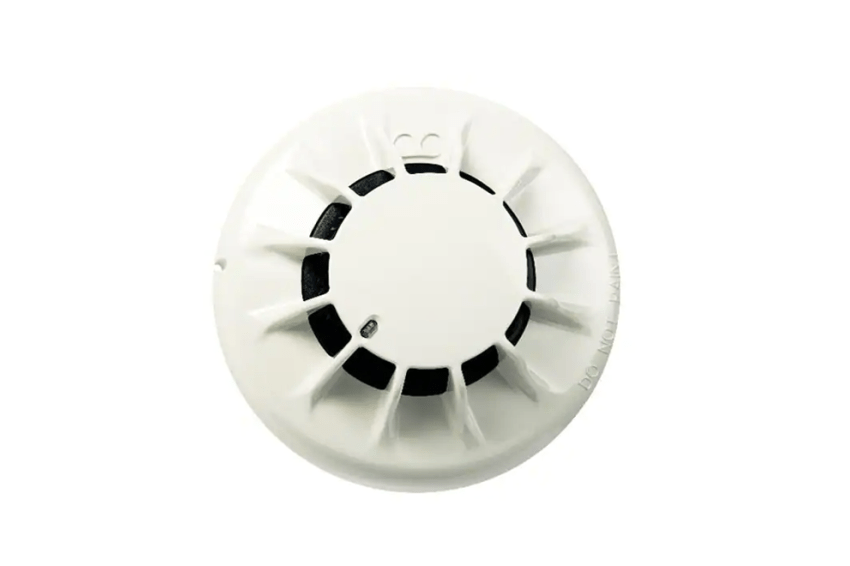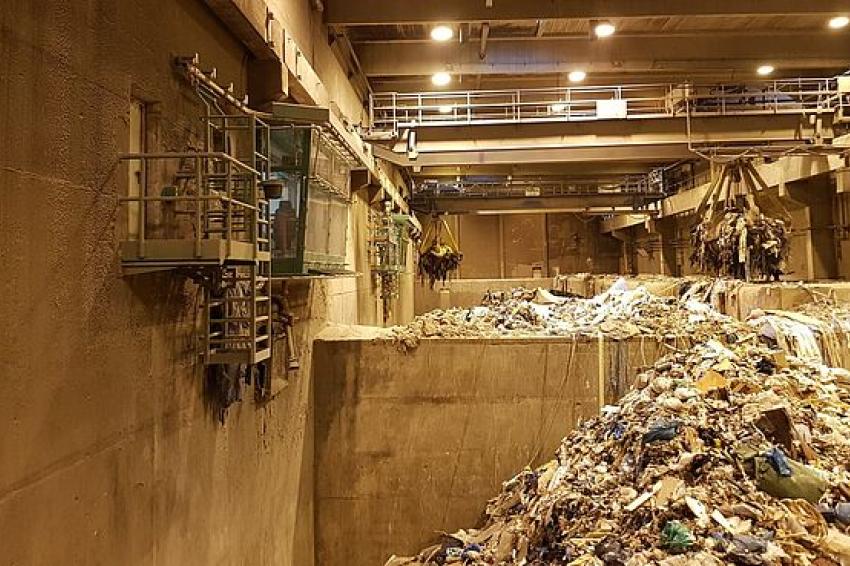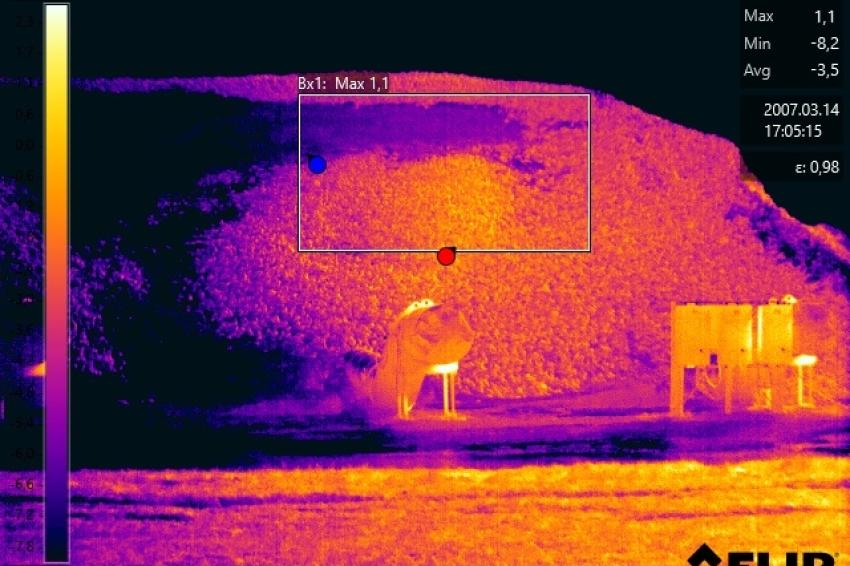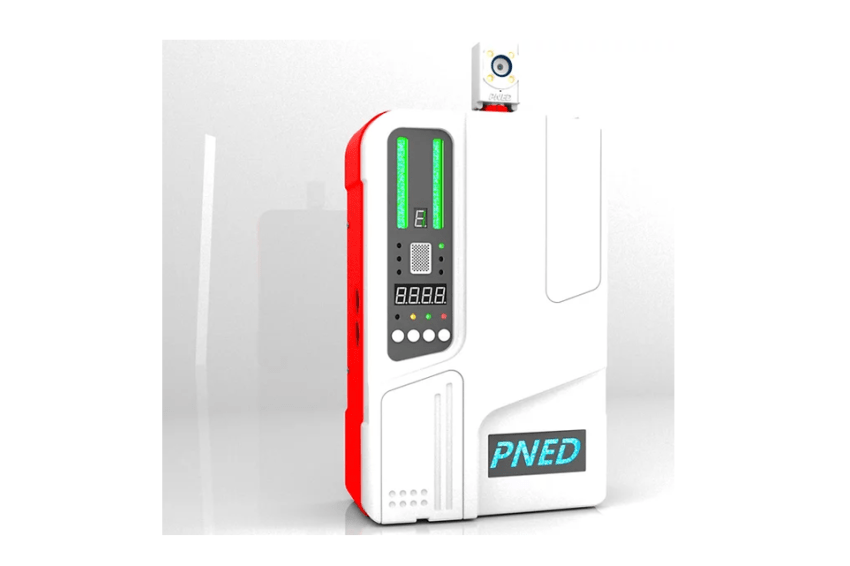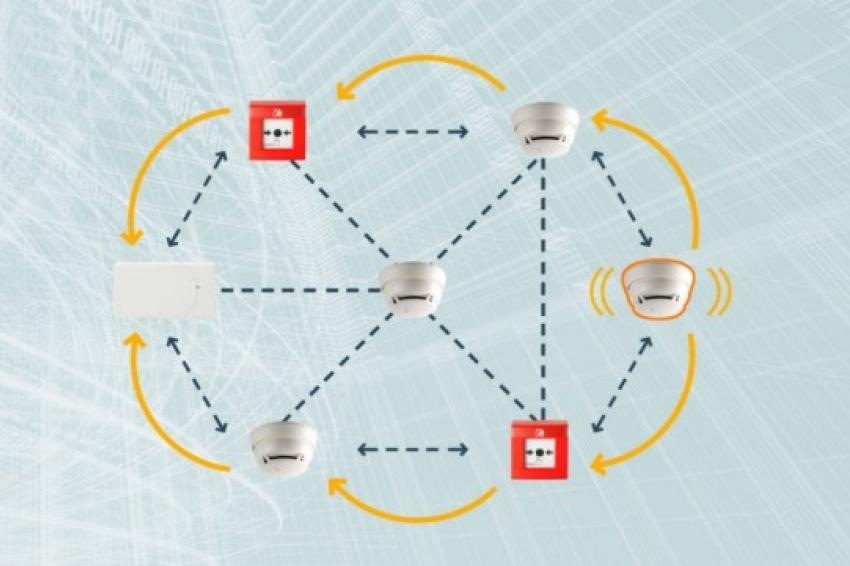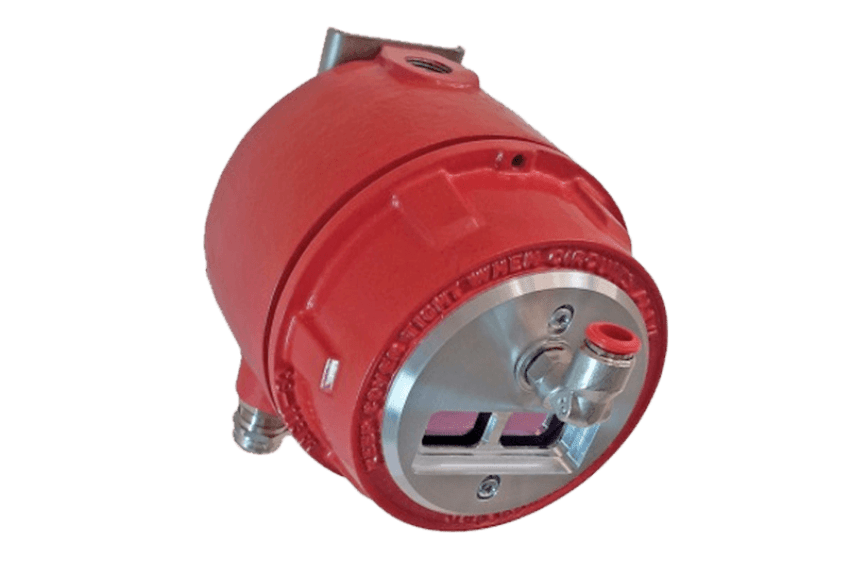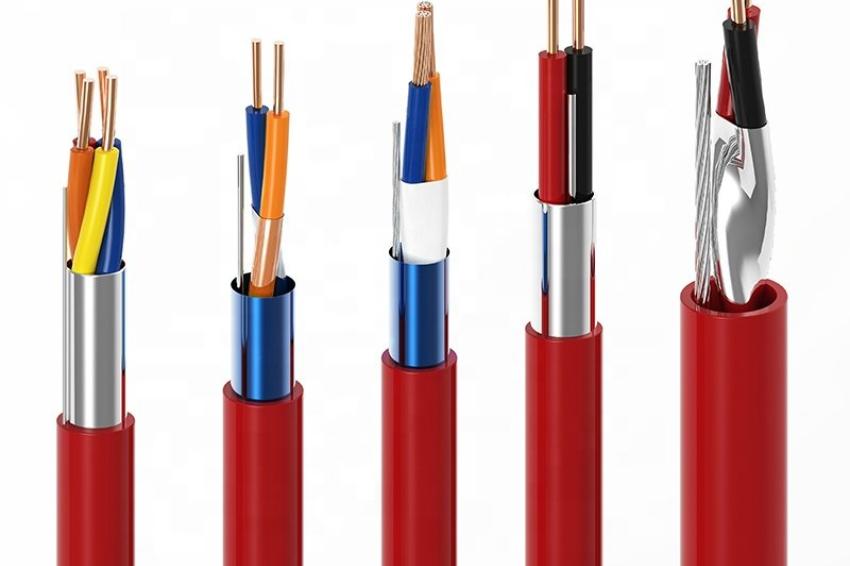Special Focus: Fire Detection in 2022
05.10.2022 - IR sensors can ‘see’ through smoke and vapor, and a combination of differently tuned sensors within one housing will detect emerging fires with a very low false alarm rate.
The heatwaves that are now affecting our daily lives ever more often are one cause of forest fires that are difficult to detect early on, before they have reached a dramatic scale. The chances of detecting a fire within a building or compound early on however are very much higher, thanks to various clever methods of monitoring the emissions and effects of smoldering or a fire. GIT SECURITY takes a look at some of the fire detection solutions available on the market right now.
Fire detectors have a similar range of approaches like human senses to raising the alarm:
- They can ‘see’ flames or smoke by using either inbuilt or follow-up image analysis to determine that a fire is probably in progress.
- They can test the temperature, either directly from the surrounding air or indirectly using infra-red cameras.
- They can sample the air quality and find tell-tale particles of combustion.
- We are not (yet) aware of a detector that can ‘hear‘ a fire, although there are detectors for the sound of breaking glass, which is a sure sign that something’s wrong!
Detecting Flames with Specific Light Wavelengths
Flames emit characteristic light wavelengths that are different enough from ambient light to provide definite proof of a fire in progress. This fundamental property is used by flame detectors with one or more infra-red or ultra-violet detectors that are tuned to these specific light wavelengths. Their response is both fast and reliable, and they provide both rapid detection and a very low false alarm rate.
Suppliers for Flame Detection
The Swedish company Unifire offers complete extinguishing solutions that also employ such flame detection methods to automatically initiate fire-fighting measures such as water sprinklers, dynamic robotic nozzles and/or foam generation.
The algorithms used to analyze normal incoming video streams for potential trouble are becoming more refined almost daily, and now deliver a reliable method of smoke and flame detection from camera image streams. Movitherm employs cameras from Flir Automation as part of their early fire detection solutions. They also offer a highly informative two-part webinar on using the IoT for fire detection applications. The Aviotec IP starlight 8000 camera from Bosch has built-in analytic software and algorithms to detect smoke and flames as soon as they appear.
Heat More Easily Detected with IR Wavelength
You couldn’t have missed the media coverage of the recently commissioned James Webb telescope, but you might not have noticed the difference between its mode of operation and that of the venerable Hubble. James Webb is responsive to much lower, infra-red (IR) wavelengths outside the visible range, and these are where heat can be easily detected.
Thermal imaging cameras typically produce the slightly weird-looking multicolor images that the TV channels love to show when checking the temperature of sunbathers, but they also highlight hotspots that we cannot see and that cannot be detected by other means. IR sensors can also ‘see’ through smoke and vapor, and a combination of differently tuned sensors within one housing will detect emerging fires with a very low false alarm rate, ignoring intentional hot spots such as exhausts or chimneys.
Supploers for IR Sensors
Johnson Controls have such detectors available in their product range, which also includes intrinsically safe devices for potentially explosive environments. EX-rated detectors are also in the comprehensive product range of devices for installation at potential fire sources that are manufactured by Esser Systems.
Aspirating Smoke Detectors and Passive Detectors Sample Aerosols from Gases and Combustion Products
Thick smoke is the obvious sign of fire, but a whole cocktail of gases and combustion products are actually emitted, even when a fire is only just starting. These aerosols can be sampled by aspirating or passive detectors that are trimmed to find increased levels of carbon monoxide, hydrogen or various hydrocarbons, for example. The actual components depend to some extent on what is actually burning and the appropriate detectors can be chosen to match particular materials that are stored or installed in that location.
Suppliers for ASD and passive Detectors
GTE Industrieelektronik can provide expert advice on an all-encompassing solution from their Adicos range for your particular premises. To raise an early warning of potential trouble, the aspirating smoke detectors manufactured by Partrix Fire capture the tiniest nano-particles that are already emitted by smoldering substances.
Combination of Traditional Ionizing or Optical Smoke Detectors and Other Types will Ensure Safety
With all types of heat, smoke and flame detectors, regardless of the techniques they employ, it is the difference to what is a ‘normal’ situation that causes them to raise the alarm. The choice of detector to be installed therefore depends on what is going to be ‘normal’ and what difference can be expected when a fire is starting. In many cases, one type alone will not be sufficient and a combination of traditional ionizing or optical smoke detectors and other types will ensure safety. Certain situations, however, preclude the use of the most common types of detector with, basically, nowhere to mount them. Take, for example, a recycling center. A very high temperature nest caused perhaps by a damaged battery could be undetected under a pile of material for a very long time before actually igniting.
Suppliers for infrared monitoring and early fire detection
Just such a problem is detected by the Waste-Scan infrared monitoring system for early fire detection by InfraTec. In each camera housing are two cameras, one infrared and one visual, as a twin system. Pan-tilt heads and are used to monitor the area and images of both channels are superimposed, which ensures excellent orientation and early fire detection. Patol offer infrared transit heat sensors to monitor waste or other material that is traveling along conveyor systems as part of their comprehensive solutions.
Options to Connect Detectors to an Alarm System: A Power and Signal-Carrying Cable
Detecting a fire is good; raising the alarm is better, so connecting the detectors back to an alarm panel or other centralized equipment — or even an app — will get the message through. The two options are either via a power and signal-carrying cable or via some sort of wireless link such as wireless LAN, a license-free frequency or even Bluetooth. The choice of which method to use will depend upon the local topology; the longest distance to be covered, the number of rooms/areas/buildings and the practicality of running cables at all.
Fire-Resistant and Flame-Retardant with Emission Rating to Ensure Minimum Possible Emissions of Smoke and Toxic Gases
It should go without saying that cable must be of a specially approved fire-resistant and flame-retardant type such as LSZH and comply with local standards and regulations for such installations. These may include a fire-survival rating (PH30, PH60 or PH120, for example), an operational rating in conjunction with the control equipment (BS8434-2 and BS8519 in the UK) as well as an emissions rating to ensure that the minimum possible smoke and toxic gases are emitted if the cable finally burns.
Suppliers for fir-resistant cables
Tratos is a respected manufacturer of such cables, with a wide range that covers every application scenario. They will also manufacture custom-designed cables if required. The Chinese cable manufacturer ZW Cables has a very informative website explaining their flame retardant and fire-resistant wire and cable products. Based in Dubai, fire-rated cable of various types are part of the broader Naffco fire-fighting product range.
Wireless Connection for Fire Detectors: Bluetooth for Short Ranges, WLAN for Longer Ranges
If a radio solution is preferred, perhaps because of there being no physical method of installing cable or to protect a building’s interior decoration, then the first consideration as to the type of radio is the required range. Bluetooth-based systems have the shortest range - within buildings, a maximum of around 10 meters (30 feet). This makes them primarily suitable for a domestic environment, and there are dozens of suppliers worldwide of such devices for use in private homes or very small commercial properties with a clean-air environment.
A wireless LAN solution will have a considerably longer range, but will require an absolutely reliable network with bandwidth always available i.e. not shared with other potentially bandwidth-hungry devices. During installation, each detector is enrolled into the WLAN and, if it is of the networked type, it will recognize its ‘neighbors’ to form a star or mesh network that will pass on alarms from one to the next and to the central fire alarm panel.
Frequencies for Smoke and Fire Detector Systems
Some smoke and fire detector systems use the license-free frequencies that are available in that particular country. These are not standardized worldwide at all; for example, in Germany, the bands around 434 and 868 MHz are free for short-range devices. There is of course no guarantee that a particular frequency in not already occupied by another nearby device, so it is helpful to have the installation options of using an alternative adjacent frequency.
Suppliers for wireless smoke detectors
Abus have three such wireless smoke detector products in their range, along with central control panels into which they can be integrated. The Siemens Swing series simultaneously uses two frequency bands to build a mesh of detectors, call points and the central control panel. For more extensive premises, you may prefer the products of Panasonic where there can be up to 4 base stations on each loop and up to 16 wireless units assigned to each base station.
Essential Standards and Regulations for Smoke Detectors
In all cases, it is essential to check that the chosen solution complies with local regulations. These can include, amongst others, NFPA and UL 217 standards in America, BS5839 in the UK, EN54 and/or EN14604:2005 in Europe (and VdS in Germany), or AS 3786:2014 in Australia for example. Other minimum standards will apply in other countries so always check with the local fire prevention authorities. A final essential point to observe: wireless detectors run on batteries, so as soon as you put this issue of GIT SECURITY down, make a recurring diary entry to check and/or replace those batteries annually, even if the manufacturer says that they last longer!
Contact
*Tyco Fire & Security<Holding Germany GmbH
Am Schimmersfeld 5-7
40880 Ratingen
*GTE Industrieelektronik GmbH
Helmholtzstr.38-40
41747 Viersen
+49 2162 3703 0
+49 2162 3703 25
InfraTec GmbH Infrarotsensorik und Messtechnik
Gostritzer Str. 61-63
01217 Dresden
Germany
+49 351 871 8620
+49 351 871 8727
Johnson Controls
Am Schimmersfeld 5-7
40880 Ratingen
+49 21 02 71 41 0
+49 21 02 71 41 100
*Patol Ltd.
Archway House, Bath Road
RG7 5HR Padworth, Reading
United Kingdom
+441189701701

